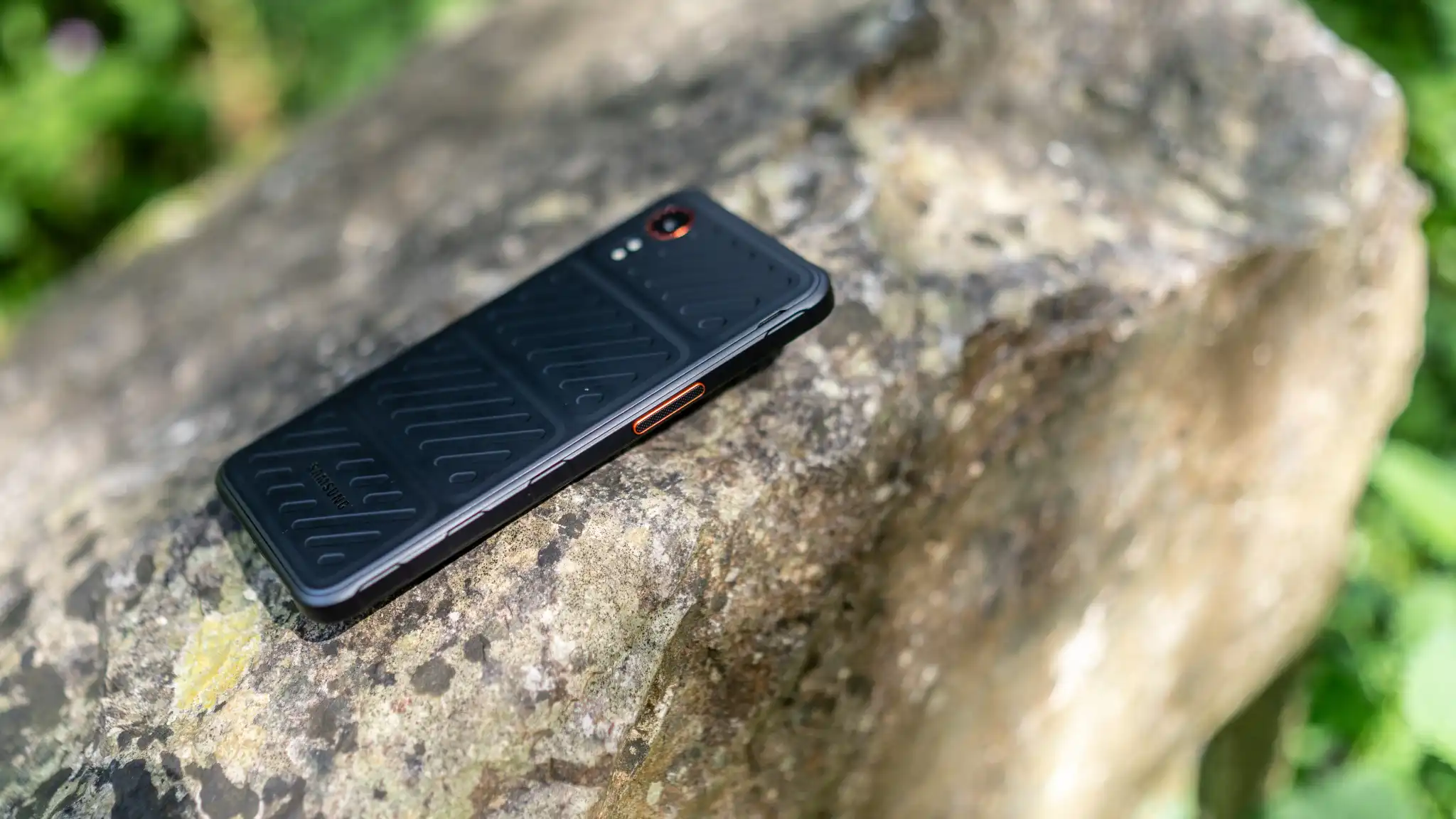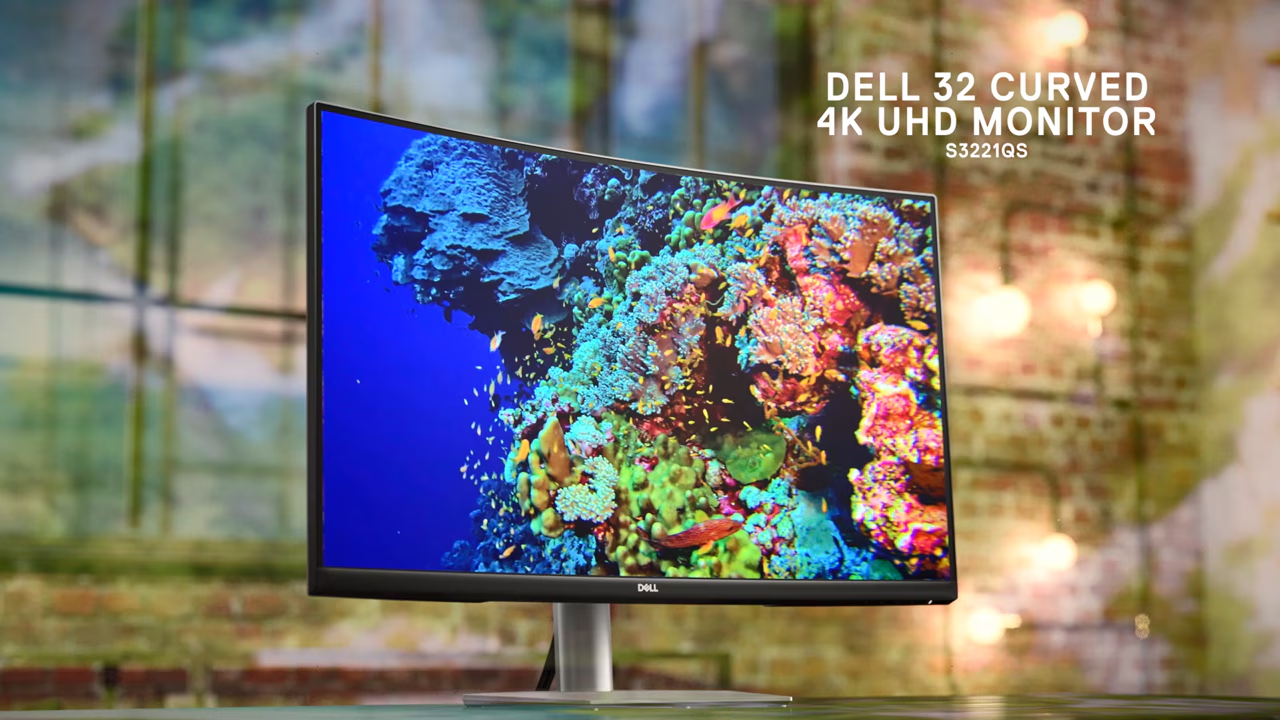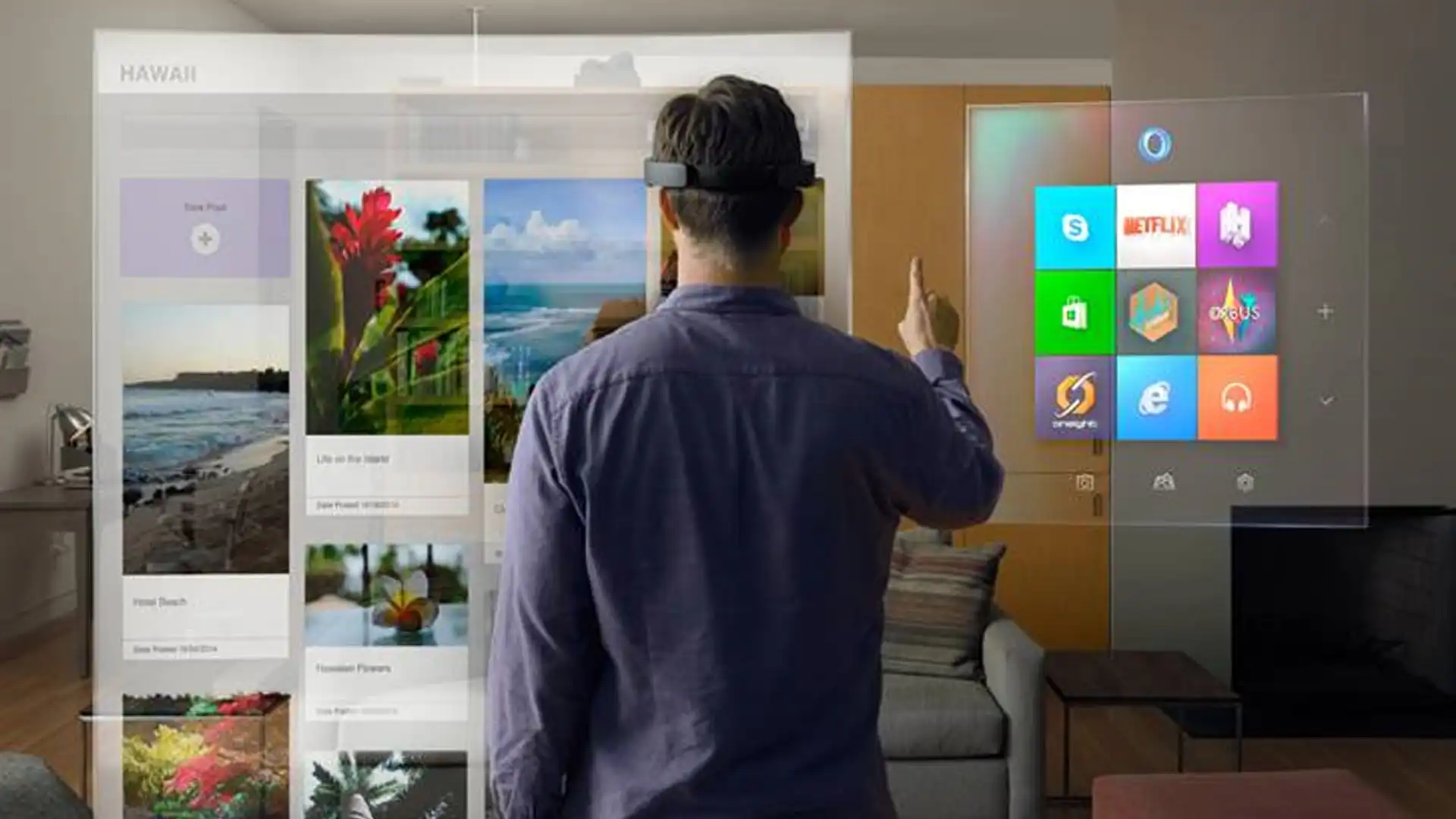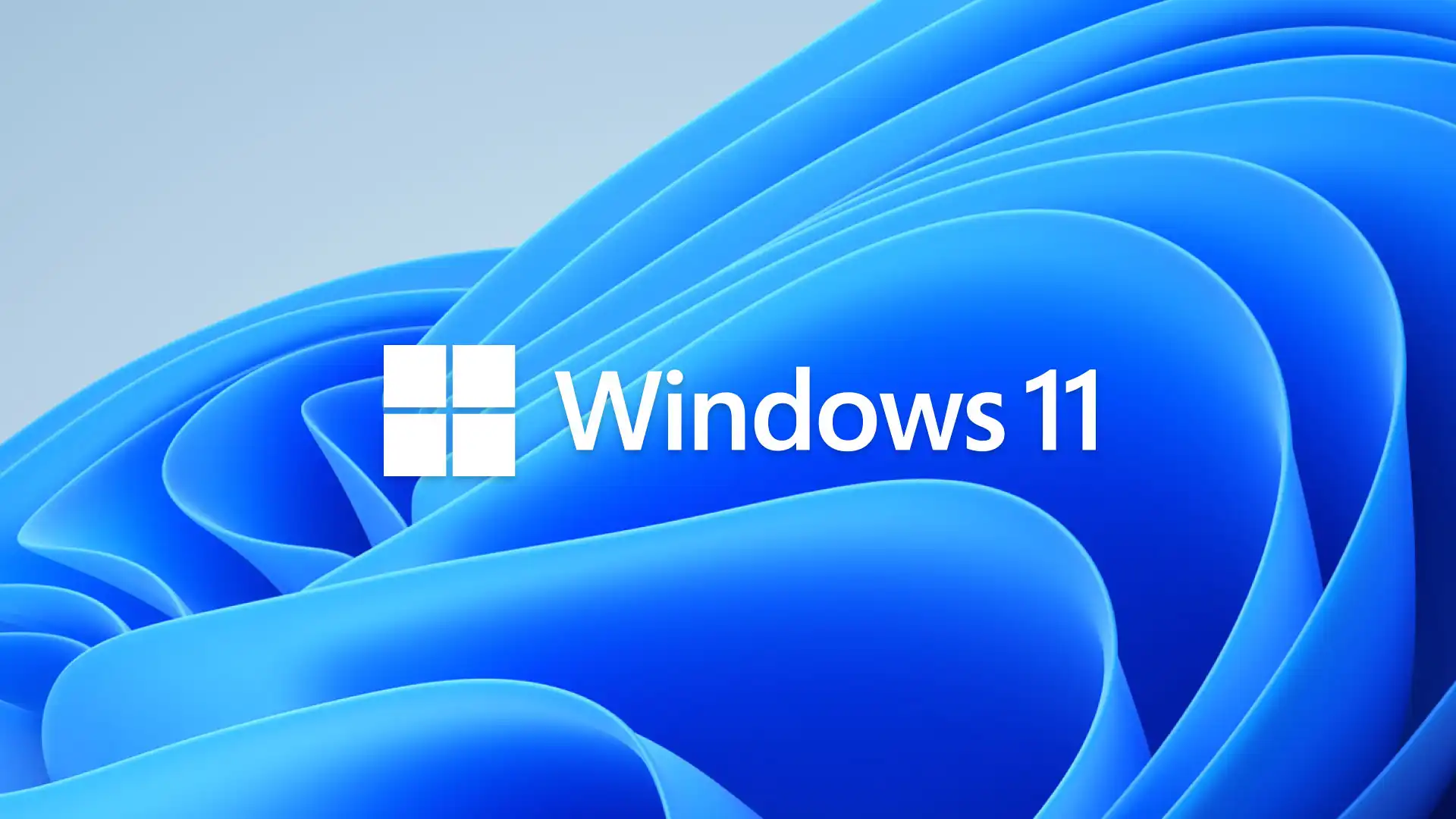Glyptodont-like within its armoured shell, the Samsung XCover7 could nonetheless be mistaken for a normal phone within a protective case, perhaps while hiking at sunset through rocky terrain miles from the nearest latte or while fishing it out of a lake.
With an IP68 ruggedness spec, yet also a removable back so you can swap out the battery for a fresh one, the XCover7 is heavy but not particularly thick considering it comes with a built-in case. However, it lacks the satellite messaging of rugged phones such as the Cat S75, so you’ll need an external module or handy 5G coverage to get your messages out.
Despite its mid-range £349 price tag, this isn’t a phone you’re going to want to use as your daily companion unless you have a good reason to.
It’s more likely to be one you keep as a spare for the times you don’t want to risk your more fragile model getting broken, or as a work phone if your job regularly takes you into places it’s likely to get wet, dirty or dropped.
Design & Build
- Rugged
- Not especially thick
- Heavy
The XCover7 doesn’t do much out of the ordinary in terms of its construction. It’s a 6.6-inch smartphone with an integral protective case, a single rear camera lens, and a large additional button opposite the power/volume switches that by default controls the phone’s LED camera flash/torch (but only if the phone’s already unlocked).
Everything else is completely standard, and if you’re in the habit of slipping your phone into something more comfortable to give it a bit of a safeguard against everyday bumps, then you might not notice the difference.
One thing that does stand out is the phone’s weight, which at 240g is heavier than similar-sized phones such as the Galaxy S24+ (196g) or Pixel 8 (187g). It’s a noticeable difference but not one that’s likely to drag you down too badly and is likely the result of the extra armour and the battery being removable.

Foundry/Ian Evenden
The custom button is large and textured, high enough up the casing to sit nicely under your finger (or your thumb if you’re a lefty) for quick access – the only problem is that it requires the phone to be unlocked, something that can’t be easily achieved if you’re wearing gloves or a face covering.
Find a way to make it work, and you can customise the button to launch an app or the phone’s camera with a single press or a longer one through its own section in the Settings app.
It’s clear why the button is set up the way it is, as it’s easy to press it by accident which would lead to the torch constantly coming on in your pocket, but with no emergency messaging system on-board for it to tie into it feels like a selling point in need of an actual use.
Screen & Speakers
- Bright and sharp
- Reflective in sunlight
- Only 60Hz
The XCover7 gets a 6.6-inch LCD display that’s surprisingly good, though a bit reflective in sunlight. Samsung’s Plane Line Switching (PLS) tech makes for a brighter screen than many other LCDs, and it’s covered in Gorilla Glass Victus+ to resist scratches.
It’s bright and sharp enough to be useful, and the resolution is perfectly respectable.

Foundry/Ian Evenden
Where it falls down is in its refresh rate, which is lower than those we’ve become accustomed to. A 60Hz framerate is absolutely fine, of course, and has worked for games and TV for decades, but once you’ve been exposed to super-smooth 90 or 120Hz screens, it’s hard to go back.
There’s a little mono speaker at the bottom of the phone, recessed behind a slit in the casing, and while it’s fairly loud and good enough for a video call from the top of a mountain you’re not going to get the greatest sound quality.
Far better to use Bluetooth 5.3 to attach wireless cans, or the 3.5mm headphone jack – a useful thing to see in a rugged phone as a cheap pair of wired headphones is more likely to survive in your backpack than the latest earbuds.
Specs & Performance
- Efficient chipset
- Low-powered though
- Only Wi-Fi 5
There’s an octa-core chipset powering the XCover7, and while Samsung doesn’t like to name it in its official spec lists, the CPU-Z app shows it as a Mediatek Dimensity 6100+ MT6835.
This lower-mid-range chip from the end of 2023 splits the processing cores into two blocks, with a pair of 2.2GHz Cortex-A76 cores accompanied by six 2.0GHz Cortex-A55 cores.
It’s an unusual choice for a Samsung phone, as the company usually uses Snapdragons or its own Exynos chips, but despite the perceived lack of top-end grunt, it’s a wise choice for a rugged phone as it extends battery life.

Foundry/Ian Evenden
There’s 6GB of RAM attached, so the XCover7 has no problem swapping between apps – likely to be the camera and messaging apps rather than any power-drinking games, given the paltry two-core GPU – and it’s responsive enough in use, though unlikely to win any awards for speed as there’s a split second of lag between pressing the Home button and the open app sliding out of the way.
One oddity is the inclusion of Wi-Fi 5 instead of Wi-Fi 6, which means you won’t be able to make the most of fast internet connections with the XCover7. This is perhaps understandable until remote campsites and mountain trails get fibre connections installed, leaving you with airport Wi-Fi as the last hotspot before the hot springs.
It puts the phone in the curious position of its 5G radio potentially being able to download faster than its Wi-Fi, so you’ll want to keep the eSIM or physical SIM slot supplied with data allowance.
As previously noted, there’s no native satellite messaging capability on the XCover7, so unless you’re in possession of a separate dongle the question of Wi-Fi or 5G is moot anyway once you’re far enough away from civilisation.
Cameras
- 50Mp
- Good enough in bright light
- Only 1080p video
Single-camera phones tend to be the cheapest of budget models, with some sort of short telephoto or ultrawide being standard equipment for mid-rangers and above. There’s only one lens on the back of the XCover7, however, and it’s not really up to Samsung’s usual high standards.
There’s a 50Mp sensor behind the wide-angle, f/1.8 lens (there’s a digital zoom option too, which lowers image quality), which bins files down to 12.5Mp by default (though high-res mode is just a tap away in the camera app).
Its images are fine in either mode, but there’s none of the colour pop or sparkling sharpness you’d expect from a phone photography champion like the Xiaomi 14 Ultra or Galaxy S24 Ultra.
The XCover7 can take ok photos while the sun’s up, but detail and saturation drop off as the light fades. It will probably do for documenting work trips to industrial sites, but if you’re planning to travel somewhere photogenic you might want to slip a different camera in your bag.

Foundry/Ian Evenden
And while the camera app starts up swiftly enough, there’s a noticeable lag between tapping the on-screen shutter button and the picture being taken.
In wet conditions, the touchscreen might not respond at all, in which case the custom side button will act as a release, and can be a better option all-round as it cuts down on the latency, though it does mean you’ll need to hold the phone in two hands.
Another drawback is the video capability. The XCover7 is capped at 1080p/30fps, which at least means you won’t fill up the 128GB of storage with enormous 4K files.
Around the front is a similar story, with a 5Mp selfie camera that’s good enough for a video call but little else.
Battery Life & Charging
- Long usage from a charge
- Replaceable battery
- Replacements not easily available
If you ever owned a Samsung Galaxy S II, back in the misty reaches of 2011, then replacing the battery in the XCover7 feels rather similar – hook your fingernail under the notch provided for the purpose on the back cover, pull the back off, then do the same for the battery and slot a new one in.
They’re small and rectangular, and you could in theory carry a lot of them, but replacements don’t seem to be available from the Samsung website. They are also, at 4050mAh, not very big.

Foundry/Ian Evenden
It’s perhaps more likely that USB charging packs could be carried instead, as they’re able to charge more devices. Pulling the back of the phone off is also how you access the SIM and microSD slots, and it has a pleasing old-school charm as well as being simpler than fiddling with a tray and removal tool, though how many times you’ll be able to do it without compromising the phone’s ruggedness remains to be seen.
The small capacity should bring down the battery life, but the efficient chipset allows it to bounce back to 15 hours of constant use with the screen on, enough for two days of light usage or more if stashed away in a backpack on standby.
There’s no charger in the box, which is fine for a supplemental device that’s more likely to be charged from a power pack or solar panel than a wall socket, but you do get a USB-C to C cable.
Charging is at 15W, which points to an expectation of using power packs instead of high-wattage wall chargers.
Software & Apps
- Android 14
- Seven years of support
- Can be laggy
One thing about the XCover7 is bang up to date, and that’s Android 14, with Samsung’s OneUI 6.0 over the top (though unlike some other Samsung models, it doesn’t support DeX mode, so you won’t be connecting it to a desktop monitor while in the forest).
Samsung has said it will receive OS updates up to Android 16, and it should get security updates for up to seven years.
Given its intended use – cold, wet or dusty environments, long spells in backpacks and the outdoors – Samsung’s Easy mode suits it well, the increased contrast and larger icons better able to make themselves seen around the reflections on the screen, and more likely to be accurately selected with a gloved hand if you’re using those clever touchscreen gloves.

Foundry/Ian Evenden
Price & Availability
- Reasonably priced
- Buy it for the ruggedness
- Not a mainstream product
The XCover7 is available directly from Samsung, and we also spotted it for sale at Amazon and Argos in the UK. At the time of writing it doesn’t seem to be available in the US.
The older XCover6 Pro (which is based on a different, and potentially more performant, chipset, has an ultrawide camera and can do 4K video) is also available, as are rugged phones from the likes of Nokia (the XR20) Cat’s S75 with its built-in satellite messaging, and specialist firms such as Doogee and Blackview.
At £349 the phone is positioned in a competitive mid-range sector of the market, where buyers can choose between phones from Nothing, Motorola, and even Samsung in the form of the Galaxy A55 5G.
Apple iPhones are still a little out of reach at this level, but none of this matters if you’re thinking about buying the XCover7 – it’s the rugged features you’re after, and this means you’ll buy the more survivable phone even if it’s not the best performer.
Should you buy the Samsung Galaxy XCover 7?
The Samsung Galaxy XCover7 isn’t a phone you’ll pick up on a whim, or as an everyday phone. It’s just too limited for that.
There are, however, some situations in which it would make a darned good choice, such as travellers heading off the beaten path or into places that are wet or dusty, where the armoured back and ability to swap batteries may come in handy.
However, its drawbacks – the stripped-back camera, the low performance and the lack of fast Wi-Fi – mean that unless you need a second handset for those places, and you know you’ll use it often, then popping your usual phone, many of which now come with an IP68 rating, into a protective case may be a better option.
Specs
- CPU: Mediatek Dimensity 6100+ MT6835
- RAM: 6GB
- OS: Android 14 (OneUI 6.0)
- Storage: 128GB + MicroSD
- Screen: 6.6in 1080 x 2408 PLS LCD, 60Hz
- Rear camera: 50Mp f/1.8
- Front camera: 5Mp f/2
- Connectivity: 5G, Wi-Fi 5, Bluetooth 5.3, NFC, USB Type-C (USB 2.0), 3.5mm headphone port
- Dimensions: 169.0 x 80.1 x 10.2
- Weight: 240g























